In the arrangement shown in Figure, mA=2kg and mB=1kg. String is light and inextensible. Find the acceleration of centre of mass of both the blocks. Neglect friction everywhere.
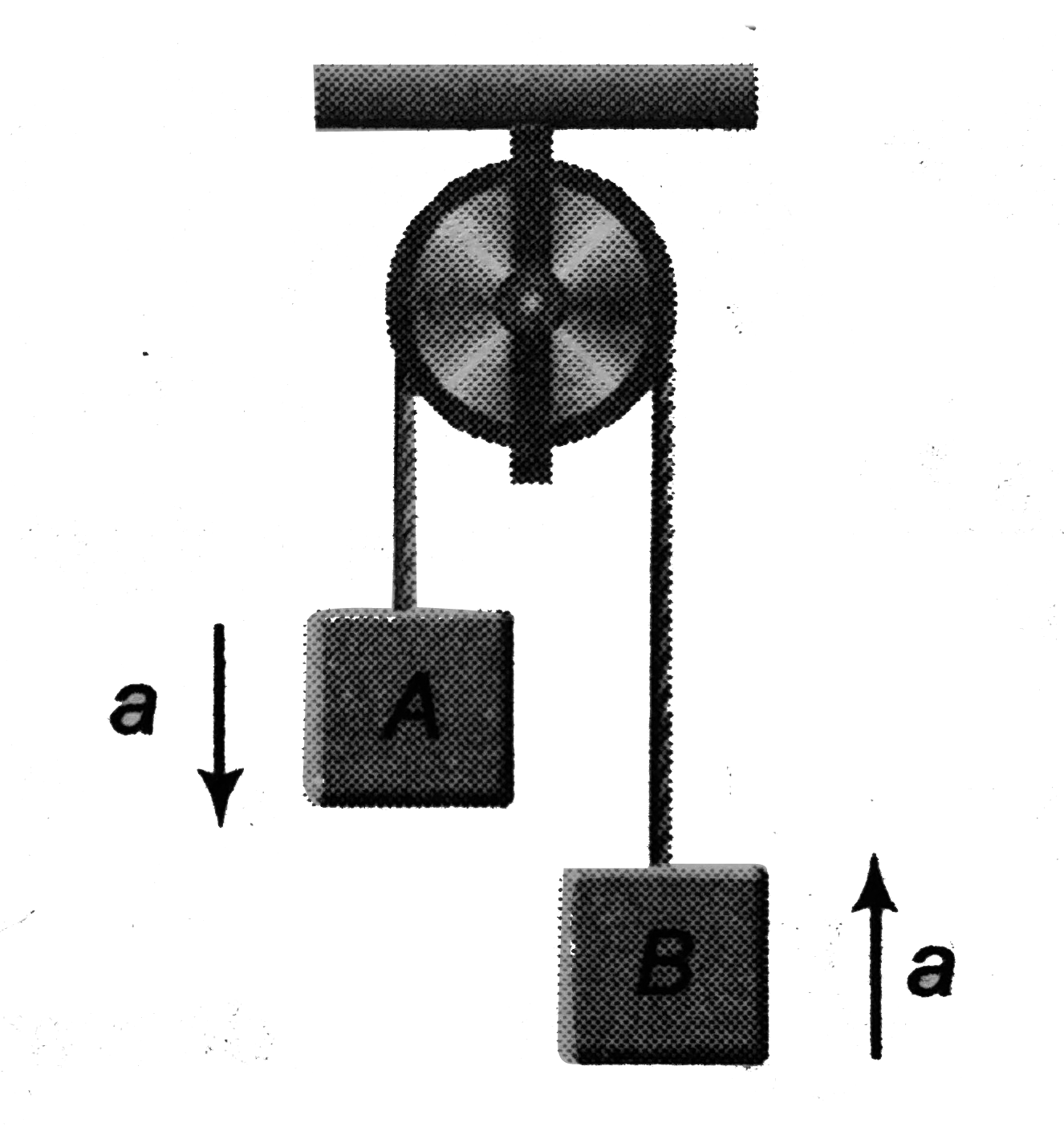
Net pulling force on the system is (mA−mBg
or (2−1)g=g
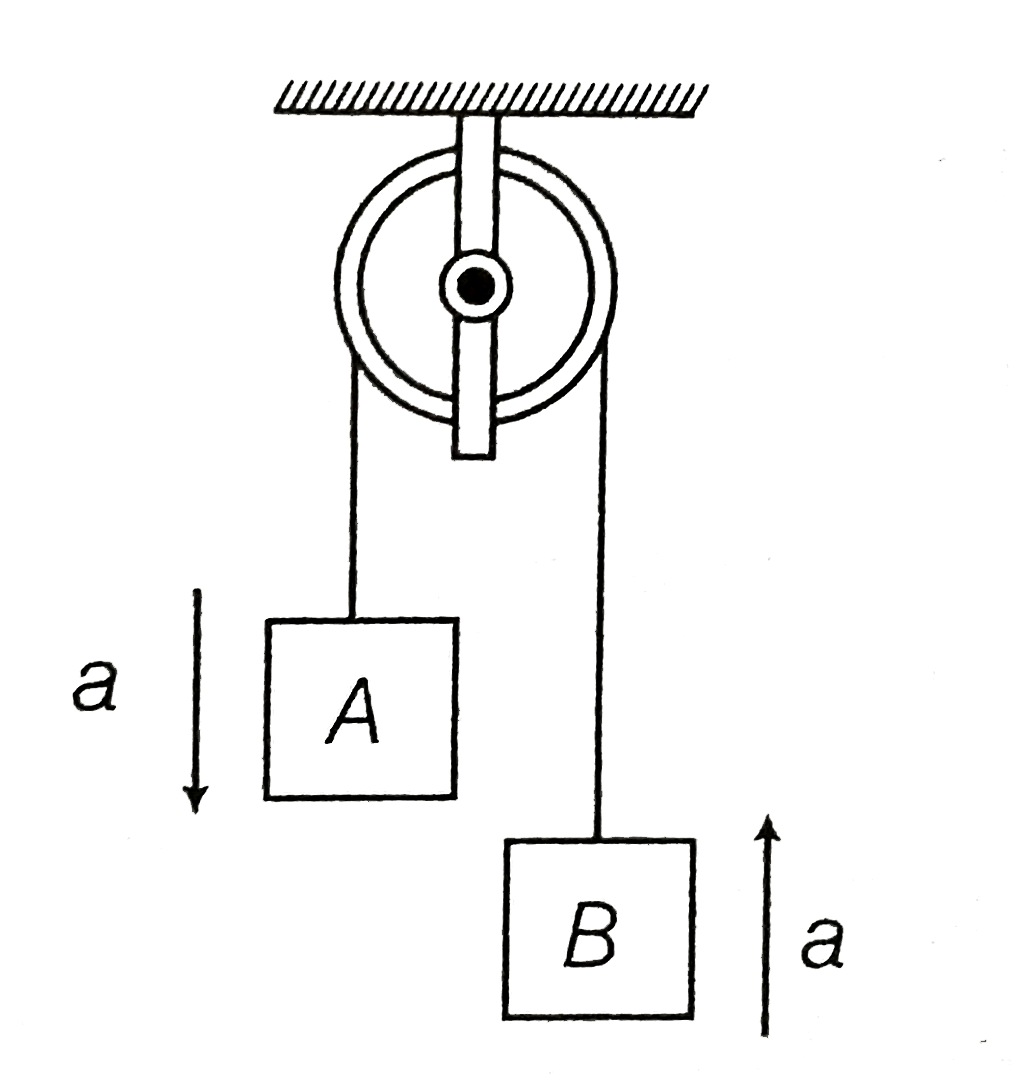
Total mass being pulled is mA+mB or 3 kg
∴ a=Net pulling forceTotal mass = g/3
Now, aCM=mAaA+mBaBmA+mB
=2(a)−1(a)1+2=a3=g3 (downwards)
Topper's Solved these Questions
- CENTRE OF MASSBOOK - DC PANDEYCHAPTER - CENTRE OF MASSEXERCISE - Check points
50 Videos
- CENTRE OF MASSBOOK - DC PANDEYCHAPTER - CENTRE OF MASSEXERCISE - Taking it together
73 Videos
- CALORIMETRY AND HEAT TRANSFERBOOK - DC PANDEYCHAPTER - CALORIMETRY AND HEAT TRANSFEREXERCISE - Medical entrance s gallery
38 Videos
- CENTRE OF MASS, IMPULSE AND MOMENTUMBOOK - DC PANDEYCHAPTER - CENTRE OF MASS, IMPULSE AND MOMENTUMEXERCISE - Comprehension type questions
15 Videos
Similar Questions
The position of centre of mass of system of particles at any moment does not depend on.
View SolutionA bullet of mass a and velocity b is fired into a large block of mass c. The final velocity of the system is
View SolutionA black body is at a temperature of 5760K. The energy of radiation emitted by the body at wavelength 250nm is U1 at wavelength 500nm is U2 and that at 1000nm is U3. Wien's consant, b=2.88×106nmK. Which of the following is correct?
View SolutionComprehension # 1
If net force on a system in a particular direction is zero (say in horizontal direction), we can apply: ΣmRxR=ΣmLxL,ΣmRvR=ΣmLvL and ΣmRaR=ΣmLaL
Here R stands for the masses which are moving towards right and L for the masses towards left, x is displacement, v is velocity and a the acceleration (all with respect to ground).
A small block of mass m=1kg is placed over a wedge of mass M=4kg as shown in figure. Mass m is released from rest. All surface are smooth. Origin O is as shown.
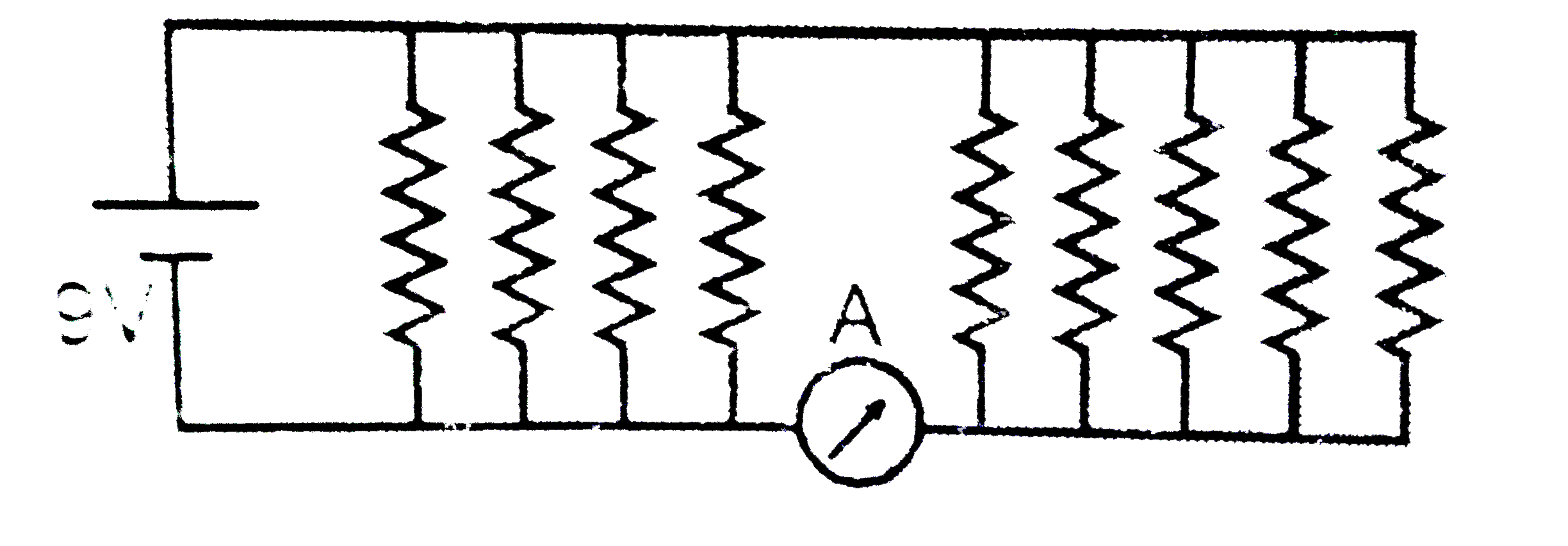
Final velocity of the wedge is ..........m/s :-
View SolutionIn the arrangement shown in figure. The strings are light and inextensible. The surface over which block are placed is smooth.Find
(a) the acceleration of each block,
(b) the tension in each string.

View SolutionIn the adjacent figure, masses of A,B and C are 1kg,3kg and 2kg respectively. Find
(a) the acceleration of the system and
(b) tension in the strings.
Neglect friction.(g=10m/s2)

View SolutionTwo unequal masses of 1kg and 2kg are connected by an inextensible light string passing over a smooth pulley as shown in figure. A force F = 20N is applied on 1kg block find the acceleration of either block (g = 10m//s^(2)) .
View SolutionIn the arrangement shown in figure what should be the mass of block A, so that the system remains at rest ? Neglect friction and mass of string.
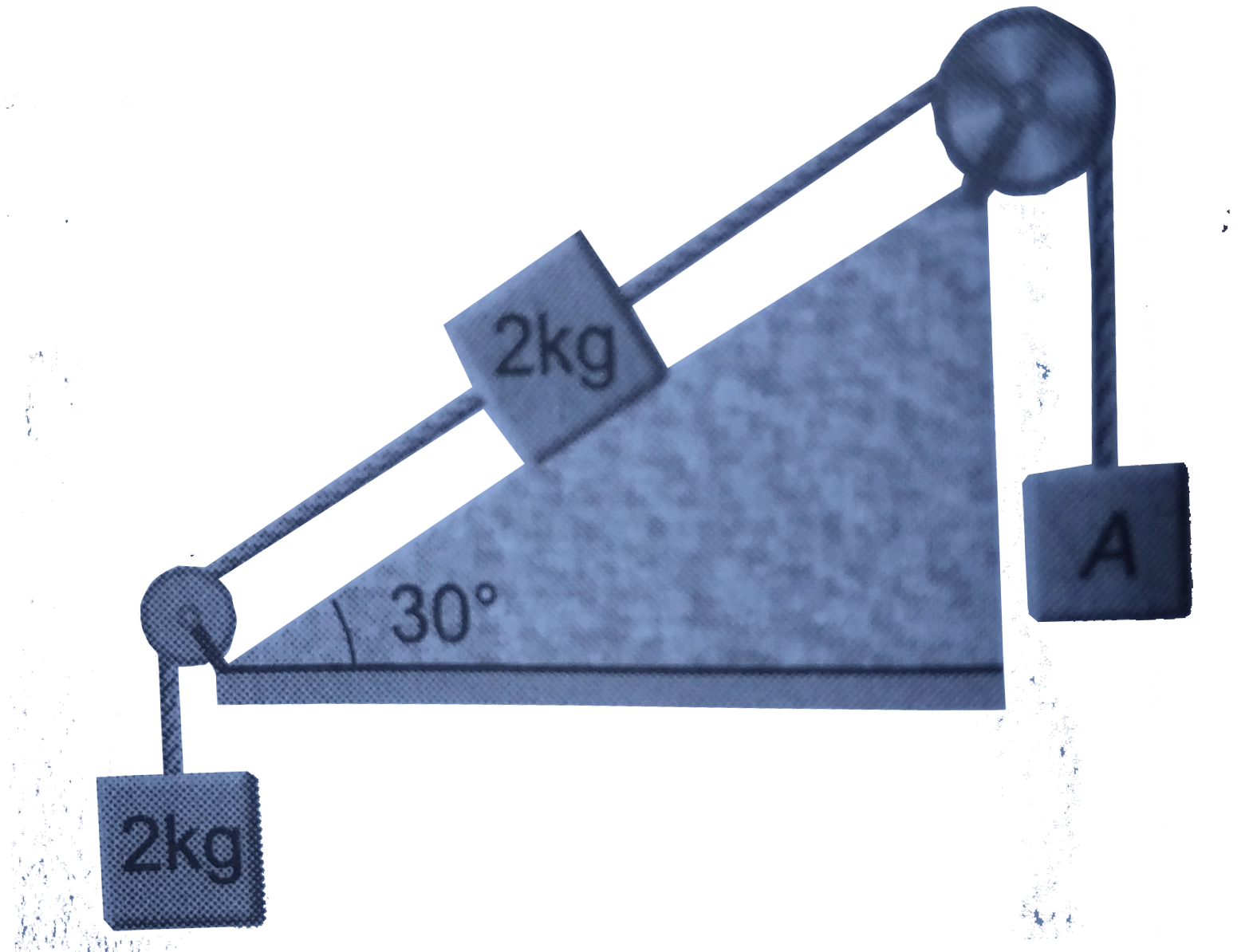
View SolutionFind the acceleration of two masses as shown in figure . The pulley are light and frictionless and string are light and frictionless and string are light and inextensible.
View SolutionIn the arrangement shown in Figure, m_A=2kg and m_B=1kg . String is light and inextensible. Find the acceleration of centre of mass of both the blocks. Neglect friction everywhere.
View SolutionA block A of mass 3kg and another block B of mass 2kg are connected by a light inextensible string as shown in figure. If the coefficient of friction between the surface of the table and A is 0.5 What maximum mass C is to be placed on A so that the system is to be in equlibrium
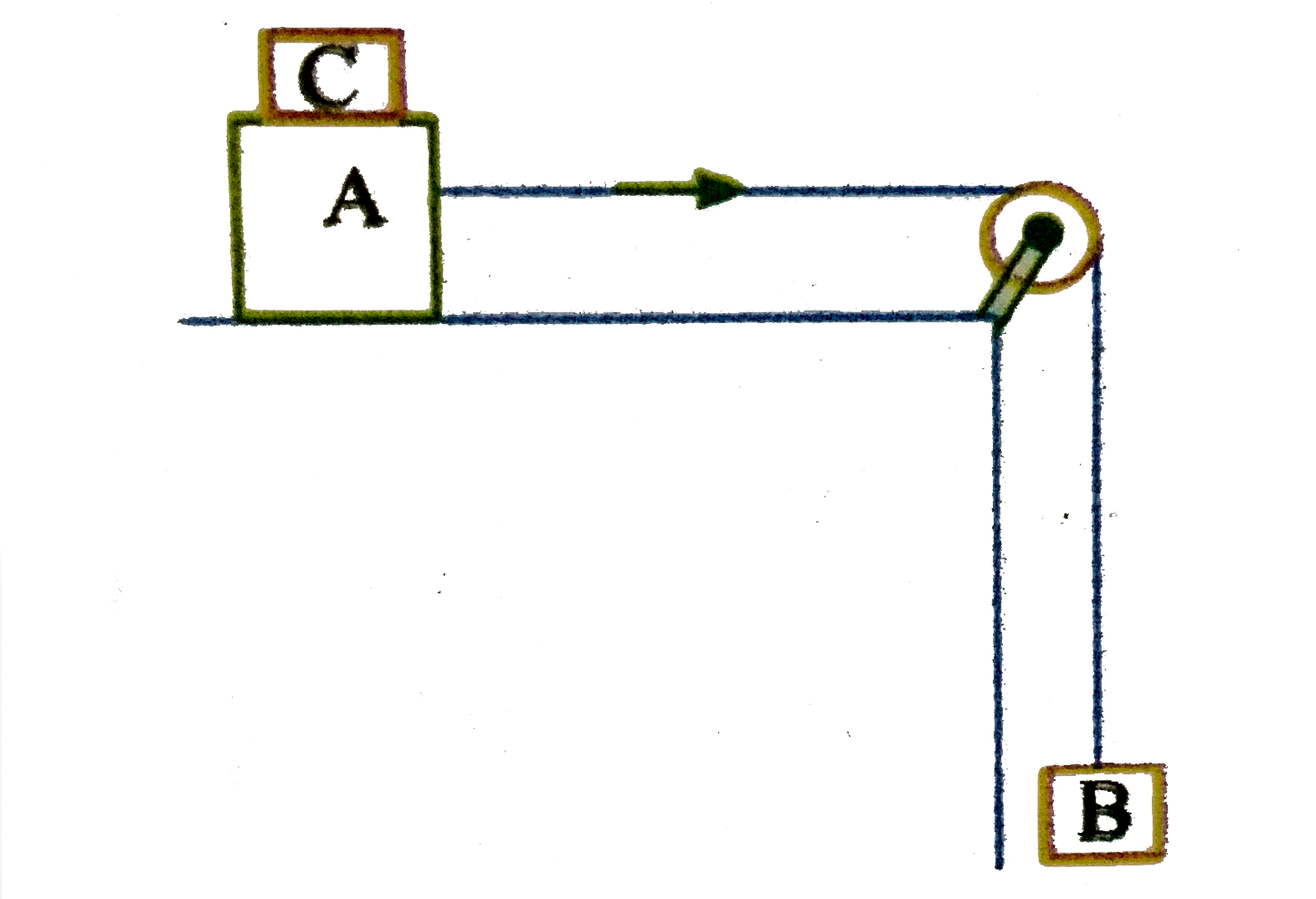 .
.
View SolutionIn the arrangement shown in figure m_(1)=1kg, m_(2)=2kg , pullyes are massless and strings are light. For what value of M the mass m_(1) moves with constant velocity? (Neglect friction)
View SolutionIn the arrangement shown in fig neglect the masses of pulleys and string and also friction Calculate acceleration of blocks A and B
View SolutionFind out the acceleration of 2kg block in the figures shown at the instant 1kg block falls from 2kg block ( at t = 0 )
View SolutionTwo blocks of equal mass are tied with a light string, which passes over a massless pulley as shown in figure. The magnitude of acceleration of centre of mass of both the blocks is : (neglect friction everywhere)
View SolutionIn the system as shown in figure, all surfaces are smooth, strings are light and inextensible, Given m_A = 1kg, m_B 2kg m_C = 3 kg , g = 10ms^(-2) K = 50 Nm^(-1) The system is released from rest.
View Solution

